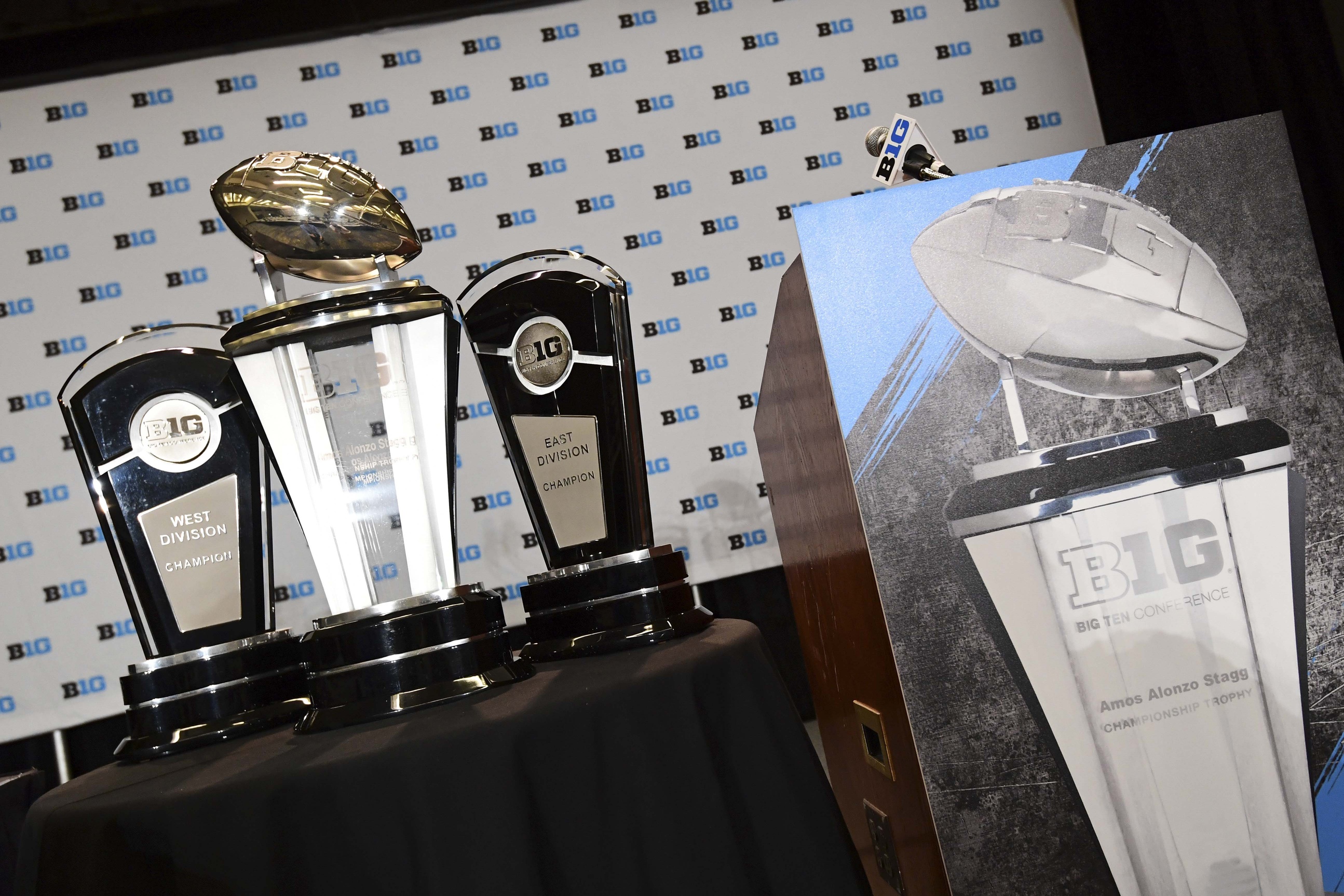Ad Disclosure

Confused about potential B1G East tiebreakers? Let’s sort through all the scenarios
Coaches and players aren’t supposed to look at “what-ifs.” Tunnel vision. No rearview mirrors. Only looking at the next opponent. What-ifs are rat poison. Looking at them is taboo for coaches and players.
But I am supposed to look at what-ifs. Believe it or not, it pays the bills.
There isn’t really a what-if for the B1G’s Playoff scenario. The selection committee has made it clear that Wisconsin won’t get into the College Football Playoff if it suffers a loss. And sorry, Ohio State. Rolling through the rest of the schedule won’t be enough to make the Playoff.
So let’s go through the biggest what-if left for the B1G Championship picture. That is, what happens with all of the B1G East tiebreakers?
A week ago, I threw out this tweet to stir the pot.
Sooo…..
OSU beats MSU then Michigan and Penn State win out…here’s how the East would look:
MSU: 7-2
OSU: 7-2
MICH: 7-2
PSU: 7-2What now?
— Connor O'Gara (@cjogara) November 7, 2017
Obviously the first part of that happened. Ohio State trounced Michigan State while Michigan and Penn State rolled in their weekend matchups. It’s not crazy to think about the aforementioned scenario happening. Michigan State and Penn State will be favored in both of their final matchups, while Ohio State figures to roll past Illinois.
If Michigan loses to Wisconsin and Ohio State wins against Illinois on Saturday, it’s a done deal. Ohio State wins the East and The Game is entirely for pride.
So….what would happen in that four-way tie? That only happens if Michigan beats Wisconsin and Ohio State while Michigan State and Penn State run the table. Ohio State would still win the East. Why?
Go back to the official B1G divisional guidelines, which say the following:
(b) If three or more teams are tied, steps 1 through 8 will be followed until a determination is made. If only two teams remain tied after any step (or sub-step), the winner of the game between the two tied teams shall be the representative. If three or more teams remain tied after any step, move to next step in tiebreaker with remaining tied teams.
1. The records of the three tied teams will be compared against each other.
In this case, it’s four teams that are tied. Their records against each other would look like this:
- Ohio State: 2-1
- Michigan State: 2-1
- Penn State: 1-2
- Michigan: 1-2
The B1G divisional guidelines say that if only two teams remain after any of those steps, it comes down to the head-to-head matchup. Ohio State beat Michigan State. Ohio State wins the tiebreaker.
Michigan can knock off Wisconsin and Ohio State and still not win the East. Bizarre.

Ok, so what about a scenario in which Michigan State and Penn State both lose one more game? Does that open the door for Michigan at all?
Absolutely.
Here’s what two Michigan wins and one more MSU and PSU loss would look like:
- Michigan: 7-2
- Ohio State: 7-2
- Penn State: 6-3
- Michigan State: 6-3
Then, it’s just a head-to-head scenario with Ohio State. Michigan, by virtue of beating Ohio State (and Wisconsin) would clinch the East. So if you’re a Michigan fan, you’re rooting against the Spartans and Lions this weekend. And next weekend.
It’s gotta be both for Michigan. If it’s only Michigan State OR Penn State losing, Michigan doesn’t win a three-way tiebreaker. But it wouldn’t be determined by “records against each other.”
- Ohio State: 7-2, 1-1 (vs. each other)
- Michigan: 7-2, 1-1
- Michigan State/Penn State: 7-2, 1-1
It would go down to the next tiebreaker — divisional record. If Michigan won out and only got one MSU/PSU loss, that would look something like this:
- Ohio State: 5-1 (division record)
- Michigan: 4-2
- Michigan State/Penn State: 4-2
Yeah, that tiebreaker goes to Ohio State, too. Confused yet? Good. I’ve got more for you.
I hear you, Michigan State and Penn State fans. How can our team win the division, you ask?
Let’s start with the Spartans because frankly, their path is easier. It’s really simple, actually. Win out and hope Ohio State loses out. Period. There’s no tiebreaker that MSU wins over Ohio State. That’s how important that game was last weekend.
As for the Lions, that’s where things get a bit more complicated. Penn State obviously has to win out just to have a sliver of hope. All of these scenarios have that as the common denominator.
In a perfect world for the Lions, Ohio State would lose out and MSU would lose at least once. Regardless of if Michigan beats Wisconsin and Ohio State, the Lions win the division in that scenario:
- Penn State: 7-2
- Michigan: 7-2
- Ohio State: 6-3
- Michigan State: 6-3
Penn State has the head-to-head advantage against the Wolverines, so that would allow the Lions to defend their B1G title in Indianapolis.
The problem, however, is that all of those things have to happen for Penn State. Let’s say OSU stunningly falls to Illinois this weekend and then loses to Michigan. But let’s say MSU wins out, as it’s expected to do. Penn State would NOT get in because of the “records against each other” metric.
- Michigan State: 7-2, 2-0 vs. each other
- Penn State: 7-2, 1-1
- Michigan: 7-2, 0-2
Yeah, it’s not looking good for Penn State. Really, it’s not looking that good for anyone besides Ohio State.
This doesn’t really get interesting unless the Buckeyes fall this weekend to Illinois. Don’t hold your breath on the 40.5-point favorites losing. If Ohio State wins this weekend, Michigan is technically only team that’s still alive. But as I mentioned earlier, the Wolverines still technically wouldn’t control their own destiny. They’d need MSU AND PSU to lose at least once and create a two-way tie with Ohio State.
I think that just about covers everything. All four teams are still alive, though to different extents. Oh, and if everyone loses out, OSU gets to Indy.
Ok, NOW that covers everything.
Connor O'Gara is the senior national columnist for Saturday Tradition. He's a member of the Football Writers Association of America. After spending his entire life living in B1G country, he moved to the South in 2015.
